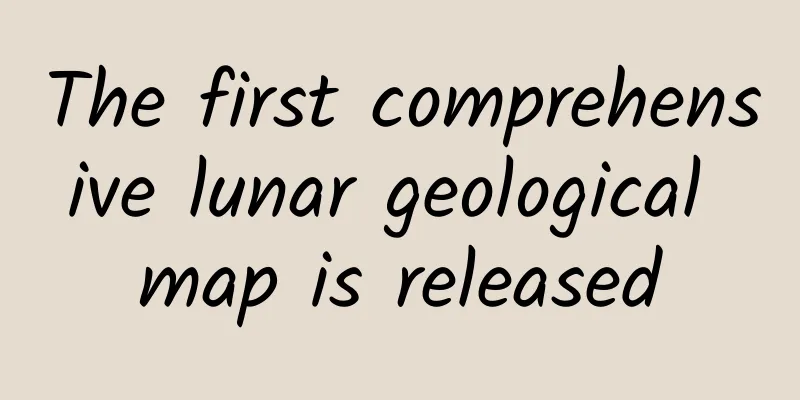The first comprehensive lunar geological map is released

|
According to the Physicists' Organization website on the 22nd, American scientists today released the first comprehensive lunar geological map to date. They said that this comprehensive map is expected to help us further understand the 4.5 billion-year history of our closest space neighbor and provide reference for future human lunar exploration and lunar landing missions. Scientists from the U.S. Geological Survey (USGS), the National Aeronautics and Space Administration (NASA) and the Lunar and Planetary Institute worked together to draw the first complete geological map of the entire lunar surface and classify it uniformly. The new lunar map, called the "Unified Geological Map of the Moon", shows the geology of the moon at a scale of 1:5000000 and is the final blueprint of the geology of the lunar surface to date. To create the new digital map, scientists used information from six Apollo-era regional maps, as well as updated information from recent satellite missions to the moon. In addition, they redrawn existing historical maps of the moon to make them consistent with modern data sets. In addition to merging old and new data, USGS researchers also unified the description of lunar stratigraphy (layers of rock), resolving issues with rock names, descriptions and ages that were sometimes inconsistent in previous maps. In addition, the elevation data of the lunar equatorial region comes from the stereoscopic observation data collected by the "Terrain Camera" on the "Earth Science and Engineering Explorer" (SELENE) satellite led by the Japan Aerospace Exploration Agency; the terrain data of the lunar North and South Poles are supplemented by data provided by NASA's "Lunar Orbiter Laser Altimeter". "This map is the culmination of a decade-long project," said Corey Fortz, a USGS geologist and lead author of the new map. "It will connect exploration data from specific locations on the Moon with data from other places on the lunar surface, and will help humans with future lunar exploration and landing missions. It will also be important to the international scientific community, educators and the general public." "People have always been fascinated by the moon and are curious about when we might go back there, and this map can provide an informative resource for future NASA missions," said Jim Reilly, current USGS director and former NASA astronaut. The public can now view and download the map at the Unified Geological Map of the Moon website. |
<<: Oil prices are falling, so why did they fall to negative levels?
>>: "The ugliest animal in the world"? No, it's a great miracle of evolution
Recommend
How to play Douyin to make money out of nothing, earn thousands of yuan a day with zero cost!
There is no doubt that you can make money on Douy...
On the 10th anniversary of the iPhone, mobile games and the App Store have also gone through the "9-year itch"
"Apple has become the most important company...
Xiaohongshu product experience analysis report: product planning and prospects!
Xiaohongshu is currently in the product growth st...
I didn’t spend a penny on promotion and achieved 23 million app downloads!
The author of this article spent 6 hours to creat...
What are the functions and advantages of developing Dongcheng’s self-service ordering app?
With the development of mobile Internet, many res...
Why not choose one year of training instead of four years of university?
[[142050]] I am a college student. I am currently...
LG's poor performance in China may make it the next brand to fall
The industry that is most deeply touched by the p...
How to determine whether the Xiaohongshu account has been restricted? Xiaohongshu’s flow limiting solution!
Children, do you have a lot of questions while op...
WeChat's latest features at a glance! In addition to dark mode, voice-to-text is also more convenient
[[319532]] The new iOS version of WeChat has more...
Analysis of search ranking rules of the three major APP distribution platforms: 360, Wandoujia, and 91
Introduction: Not many people mention APP SEO , a...
Baidu information flow is not growing? Learn about multidimensional data analysis!
Whether it is education, games, novels or product...
China Automobile Dealers Association: China's imported automobile market situation in November 2022
...
25 copywriting skills to teach you how to create good copywriting that heals people's hearts
Many people often say that they can’t find the fe...
Guide for travel businesses to make the most of Xiaohongshu notes!
It has been three years since the outbreak of the...
How many megabytes of bandwidth does a short video server require for rental?
Short video platforms are the most popular traffi...









